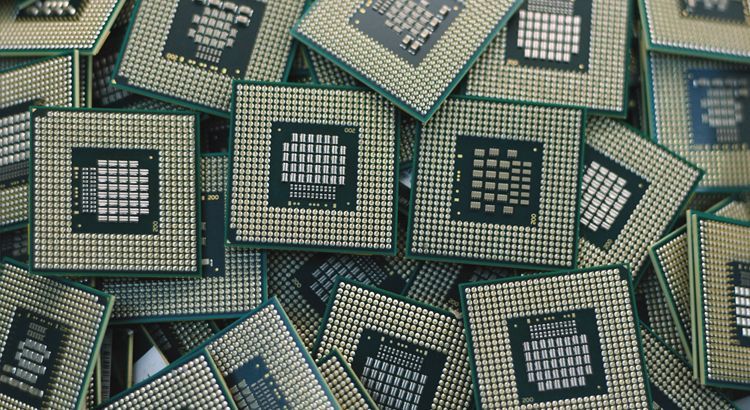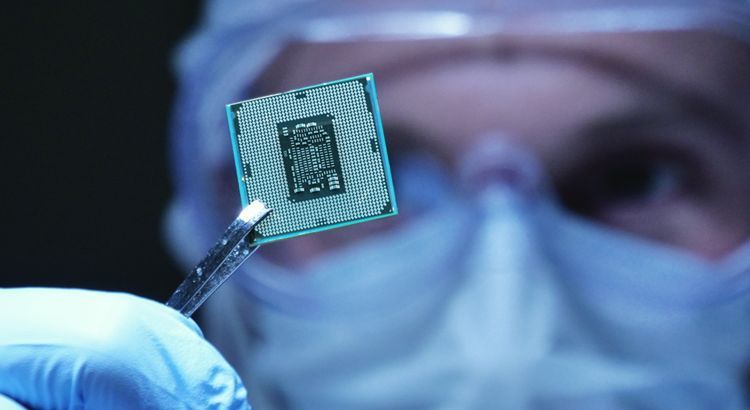
CHIPS Series Part 2: Microelectronics and the future of defense platforms
Mercury Systems
March 17, 2023
The recently signed Creating Helpful Incentives to Produce Semiconductors and Science bill, also known as the CHIPS and Science Act of 2022, could help transform the future of defense and aerospace technology. Over a series of blogs, we examine the state of U.S. chip manufacturing, the role microelectronics have in the future of defense, how the new legislation is a first step toward a long-term, sustainable supply of semiconductors and additional steps we might take to help solve multiple challenges across industry and time horizons.
The past two decades have seen a massive increase in the use of semiconductor-based consumer electronics and, not coincidentally, a major decrease in the size and weight of the components required for this kind of technology. But in the defense world, where product development can sometimes take a decade, such a shift is only now getting underway.
Traditionally discrete, limited and isolated legacy platforms are being replaced by smaller, smart and connected electronic sensors and processors. As many digital systems that will require even more processing power are planned, developed and scheduled, our national security will increasingly rely on microelectronics and the creation of entire defense-sensor platforms and/or processing systems on a chip (SoC).
The ongoing electronification of defense platforms
Microelectronics are being used more and more in the defense world, resulting in electronic and microprocessor-based sensor platforms that are faster and far more capable than those they supersede. As compared to legacy systems, the number of electronic systems per defense platform has also doubled, as has the spend per platform on electronics, which now comprise 40% of costs.

The Department of Defense is set to continue this trend for the foreseeable future. Pentagon concepts such as Joint All-Domain Command and Control (JADC2) are driving the development and adoption of smart and connected technology in command and control, mission computing, sensor processing and communications, and sensors and thus are substantially increasing the need for field-deployable processing power. Adversary countries are also researching and developing this technology, meaning the U.S. will need to keep innovating in this area to retain a competitive advantage.
Continued innovation in this area will bring other benefits stemming from the “micro-” part of the term “microelectronics.” Defense platforms face size, weight and power (SWaP) constraints and harsh environments that often limit how much technology can be installed, but the use of microelectronics is flipping that limitation into opportunity. As the technology gets smaller, lighter and less power-hungry, it allows for the use of even more electronics. For example, legacy naval systems containing RF sensors, digital-signal processing, digital-conversion unlocking and more require a 6- to 8-foot pod to host the components. Today, this can all be done at chip scale, bringing new capabilities to smaller platforms or freeing up valuable ship real estate and resources for other uses on larger ones.
Making it happen with domestic manufacturing
The continued transition to these platforms will require both a significant increase in domestic semiconductor manufacturing and the continued adoption and adaptation of commercial computing technology by industry. In the third and final blog of the series, we will explore four big challenges to accomplishing this vision and discuss ways to approach them — including a $2 billion investment in microelectronics for the Department of Defense (DOD).
Mercury Systems is an industry leader in microelectronics and system-in-package and multi-chip modules. If you’re interested in learning more about connected and chip-based defense technology, read our recent blog on JADC2 and see what our CEO had to say about the recent DOD announcement about a new Microelectronics Commons.
Miss the first blog in the series? Catch up now.







 The importance of evolving your brand: A Mercury case study
The importance of evolving your brand: A Mercury case study Packaged and ready to go: Mercury and our chip-level future
Packaged and ready to go: Mercury and our chip-level future